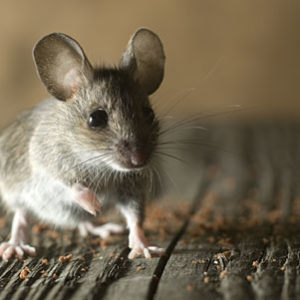 It’s every homeowner’s nightmare: You notice rodents in your home. Yet by size, you can’t tell if the uninvited guests are rats or mice. Although mice tend to be smaller, size is only one of several differentiating factors between these two rodents.
It’s every homeowner’s nightmare: You notice rodents in your home. Yet by size, you can’t tell if the uninvited guests are rats or mice. Although mice tend to be smaller, size is only one of several differentiating factors between these two rodents.
Relation
Across the globe, there are multiple species of rats and mice. Commonly, rats are medium sized and have long, thin tails. By contrast, mice tend to be no bigger than a sparrow. When your home is infested, you’re nearly always dealing with Norway rats, black rats or house mice.
Although Norway rats and house mice do share a common ancestor, both have clear distinctions in how they develop. Norway rats mature at a slower rate than mice – a 21- to 24-day gestation period versus 19 to 20 days for mice. Rats open their eyes after six days and have a full coat of fur at 15 days. Mice meet these steps at three and 10 days, respectively.
Despite generic similarities, rats are known for hunting, killing and even eating mice. As such, both infestations rarely coexist in one home; the scent of a rat’s urine can deter mice from setting up a nest.
Physical Differences
A typical Norway rat is longer – 9 to 11 in. – and heavier – 350g to 650g – than a standard house mouse, which may be 3 to 4 in. long and weight 30g to 90g. Beyond size, rats have larger, heavier and more angular heads, typically in a triangular shape with a pointed, defined muzzle. Fur resembles a coat, rather than a fine layer. On the other hand, ears are proportionately smaller. In general, mice features are smaller in proportion, except for the ears.
Age also plays a factor, as young rats may look like adult-sized mice at a glance. If you can study one long enough:
- A young rat often has “juvenile” proportions, including a stubby face, wide nose and large feet. These even out and become larger once a rat matures.
- Adult-size mice have a different combination of features, with large ears, a narrower tail and feet small in proportion to the body.
Behavior
 If you watch rats or mice from a distance, you’ll notice:
If you watch rats or mice from a distance, you’ll notice:
- Rats tend to be more cautious, taking their time to get accustomed to new surroundings and features and typically following set routines.
- By contrast, mice have a more curious nature. This factor makes them easier to catch with over-the-counter traps.
- Mice and rats are not terribly picky about what they eat, although mice prefer grains and plants only. Rats will also go after meat.
- For nests, mice typically select hidden areas not too far from a food source and make it out of cloth and shredded paper.
- Mice reproduce very quickly, having up to 10 litters of five to six babies per year. Most start reproducing after six weeks.
- Rats go at a slower pace, with six litters of 12 babies per year and start reproducing by the three-month mark.
- Mice can stand up on their hind legs, with their tail for support and can also jump, climb, swim and run very fast.
- Although they also climb, rats are typically stronger swimmers than mice. As a result, they can get into your home through a toilet or broken pipes.
- Rats tend to burrow and will create tunnels under buildings, fences, plants and piles of debris.
- Both can crawl through very small holes; mice up to a quarter inch and rats, as small as a half-inch in diameter.
- Rats travel less, usually not going more than 300 feet from their burrow.
- Mice are typically nocturnal and will be at their most active from dusk until dawn. If a nest is disturbed or food seems short in supply, they will venture out during daylight hours.
No matter which rodent lives in your home, it’s absolutely essential that you get it removed right away. For quick and efficient mice extermination, reach out to Eliminate ‘Em today to learn more about our services.


